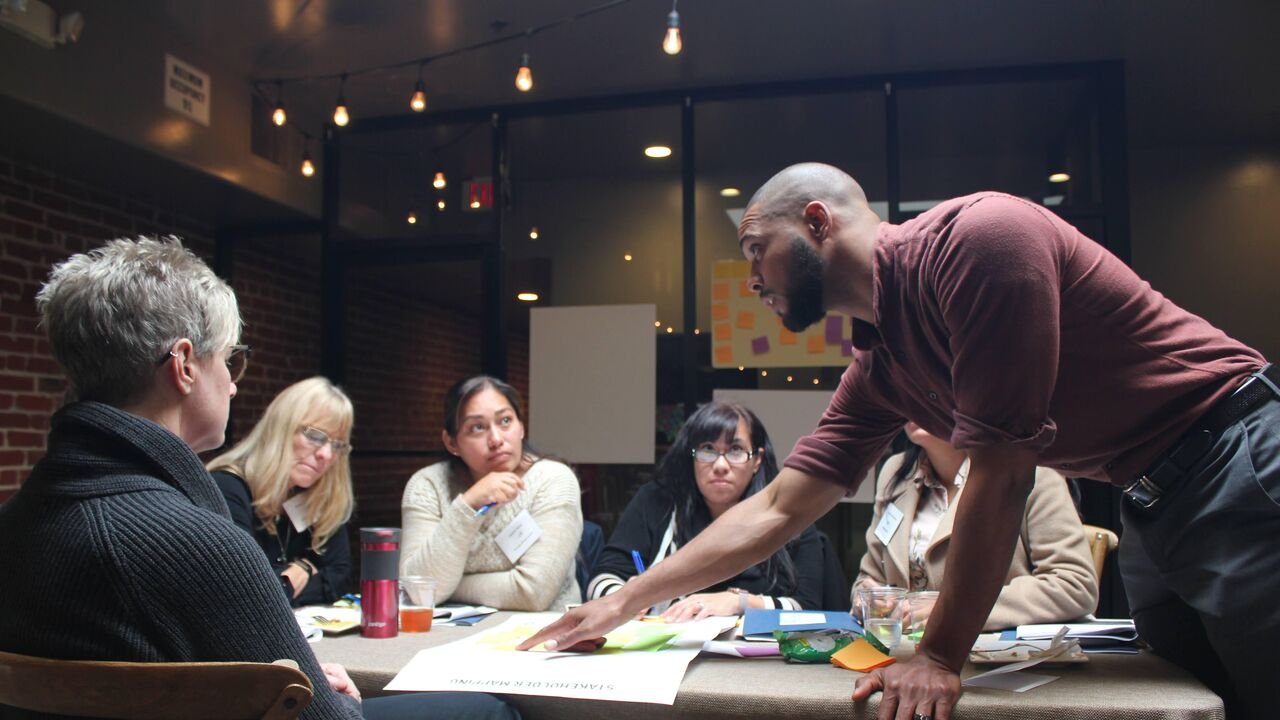
FOUNDER AND CEO
Durell Coleman
Durell Coleman is the namesake founder and CEO of DC Design, a social impact design firm on a mission to eliminate multigenerational poverty and uplift Black, brown, and low-income communities in the United States. Through a combination of Design Thinking and Systems Thinking, he and his team help nonprofits, foundations, and governments better define community needs, develop strategy, and design solutions to some of America’s most pressing social challenge. In his journey as a designer, Durell has worked to redesign aspects of the foster care system, develop new approaches to criminal justice reform, reimagine healthcare service models, create apps that connect communities, and develop new educational models for the 21st century. His work has led to reductions in mass incarceration, homelessness, economic inequality, Black infant mortality and more. Trained in mechanical engineering (B.S) and sustainable design (M.S.), he is a two-time alumnus of Stanford University and its famous Institute of Design (the Stanford d.school).
As an educator, Durell regularly teaches social impact design, innovation, entrepreneurship and leadership at Stanford University. In addition to the classes he has taught at the Stanford Institute of Design, he also serves as a lecturer at the Graduate School of Business. He has taught design thinking to refugees designing solutions to challenges in refugee camps, school leaders seeking to redesign the culture of their school, students seeking to create a more inclusive campus, and corporate executives from Sony, Oracle, and Santander. He is the creator and director of Design the Future - an award-winning STEM program run in collaboration with top universities that teaches high school students to design products for individuals with physical disabilities. His original research is the basis for the 5 Systems of Black Inequality video series. He is an expert in multi-stakeholder, human-centered design; has been awarded the Jefferson Award for Public Service as a result of his work; and is one of the subjects of the PBS documentary: “Extreme by Design,” which is used as a design thinking teaching aid all over the world.
Durell’s Story
As a student at Stanford, I was asked by my professor to list 100 problems you might want to solve in the world. After #67, my answers changed from simple personal problems to bigger societal challenges like poverty, human health, access to opportunity, and environmental degradation.
I realized I wanted to focus on designing solutions to the problems that are coming and to the problems that affect people globally. I started by designing a small, functional wind turbine to increase access to electricity in the developing world. I spent two months in the forests of Nicaragua, interviewing subsistence farmers, and trying to come up with a renewable energy source they could use. Talking with these farmers taught me that development data is often false; experts like to cite $2 a day or less as the cutoff line for poverty but, it’s much more nuanced in reality. This was validation of the human-centered design (i.e. Design Thinking) approach I had adopted that requires us to speak to real people to understand the nuances of a problem.
I returned to Stanford to complete a Master’s in Sustainable Design, passionate about the environment and hopeful that I could continue the Nicaraguan project. But my wind turbine design ultimately failed when I stopped applying the design principals that were core to its creation; when I stopped talking to the people I was most trying to serve. After four years it was a difficult admission: my design had failed but I had learned a lot about what not to do to solve a big problem and I was more convinced than ever that human centered design is necessary.
Following my first failure, I started using my skills to do cycles with smaller design projects close to home, such as designing laser-cut maps, lamps and projects for local companies.
In May 2013, I launched a Kickstarter campaign to buy an industrial laser cutter for one of my projects. In 7 days, the project was funded and I used that laser to build DC Design into a contract product design and prototyping business. That year, I hired my first employee and we continued to hone our design approach: repeating what worked and learning from our mistakes.
In 2014, I began teaching others what I'd learned about design over the years. I started teaching at Stanford and over that next year, DC Design grew as we worked with companies like Oracle, Fujifilm, and Santander.
As we entered 2015, with so many possible directions we could head in as a company, we discussed what was important to us. Our conclusion was that the projects that meant the most to us were the ones that had the potential to truly change lives for the better. So in 2015 we further aligned our focus with our founding mission. DC Design would be a social impact design firm focused on solving the world's biggest problems through human-centered design.
That year DC Design launched one of its flagship programs: Design the Future to teach high school students to design solutions to problems associated with health and disability in our communities, we began selling our sustainable brand of bamboo notebooks, and from 2015 to 2017 we worked with government agencies like the US Embassy in Madrid, marginalized communities like refugees from Western Sahara, Palestine, Syria, and Tibet and low income communities in Miami. We designed products to aid in the mobility of people with disabilities and are helping to lead a major redesign effort of the US foster care system.
I created that original list of problems in the world when I was 19 years old. It's been 10 years of an incredible journey. I'm excited to see where the next 10 years takes us.
MEET THE FOUNDER






